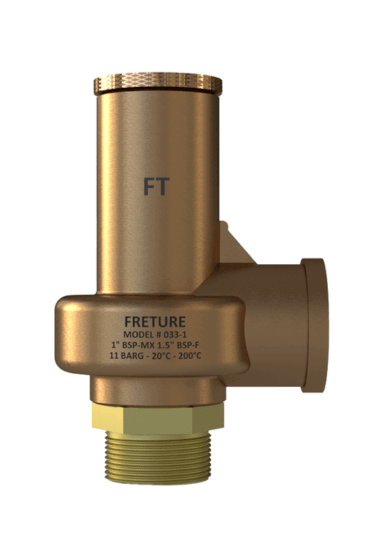Safety valves are critical components in various industrial systems, designed to prevent overpressure conditions that can lead to equipment failure or catastrophic incidents. Understanding the different types of safety valves and their specific applications is essential for maintaining system integrity and operational safety. This article explores the various types of safety valves commonly used in the industry and their respective applications.
1. Spring-Loaded Safety Valves
Description
Spring-loaded safety valves are the most common type of safety valves. They utilize a spring mechanism to hold the valve seat closed until the system pressure exceeds a predetermined set point.
Applications
These valves are widely used in:
- Boilers: To prevent excessive pressure buildup.
- Pressure Vessels: Ensuring safe operation in chemical processing.
- Pipelines: Protecting against pressure surges in oil and gas transport.
2. Pilot-Operated Safety Valves
Description
Pilot-operated safety valves consist of a main valve and a pilot valve. The pilot valve controls the main valve's operation, making these valves suitable for high-pressure applications.
Applications
Commonly found in:
- Refineries: Managing high-pressure systems efficiently.
- Power Plants: Maintaining pressure stability in steam and gas systems.
- Chemical Plants: Handling large-scale production processes safely.
3. Direct-Acting Safety Valves
Description
Direct-acting safety valves operate on the principle of direct pressure application on the valve seat, providing quick response times.
Applications
These valves are ideal for:
- Small Systems: Such as domestic boilers and small-scale equipment.
- Hydraulic Systems: Ensuring immediate pressure relief during operation.
4. Safety Relief Valves
Description
Safety relief valves are designed to handle both liquid and gas applications, automatically releasing pressure when it exceeds safe limits.
Applications
Used in:
- Petrochemical Industries: Protecting storage tanks and vessels from overpressure.
- HVAC Systems: Ensuring system integrity in heating and cooling applications.
5. Balanced Bellows Safety Valves
Description
Balanced bellows safety valves feature a unique design that minimizes the effect of back pressure, allowing for stable operation even in fluctuating pressure environments.
Applications
These valves are crucial in:
- High-Back Pressure Systems: Such as downstream pipelines and gas transmission lines.
- Critical Applications: Where consistent performance is required despite varying system conditions.
6. Dual-Function Safety Valves
Description
Dual-function safety valves serve as both safety relief valves and conventional valves, providing flexibility in operation.
Applications
Common in:
- Chemical Processing: Managing diverse operational requirements with a single valve.
- Oil and Gas Applications: Ensuring versatility in various pressure scenarios.
Conclusion
Understanding the different types of safety valves and their applications is vital for ensuring the safety and efficiency of industrial systems. Each type of safety valve serves specific needs and functions, making it crucial to select the appropriate one based on operational requirements.
For industries seeking reliable and high-quality safety valves, Freture Techno Pvt. Ltd. is a leading safety valve manufacturer based in Mumbai, India, committed to providing top-notch solutions tailored to meet diverse industrial needs.





No comments:
Post a Comment